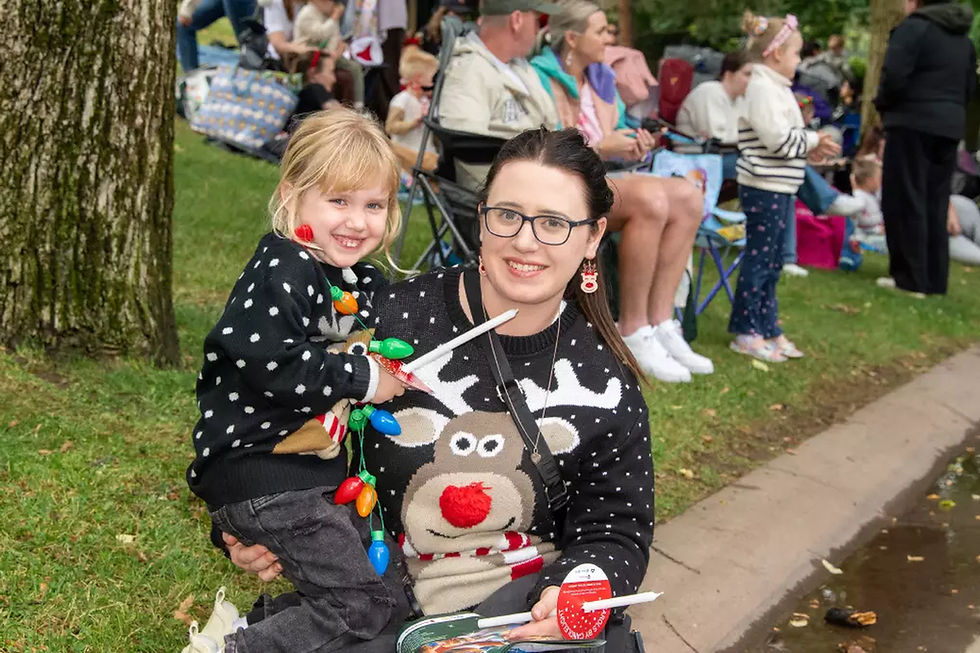A Grounded Perspective on Space and Discovery
- NOEL HOBLEY

- Aug 29, 2024
- 3 min read

Back at the Discovery Science and Technology Center, the girls continued their exploration of space, this time focusing on how space is understood from our vantage point on Earth. The shift in perspective provided them with an exciting opportunity to deepen their knowledge and appreciation of the vast universe that surrounds us.
The visit began with another enjoyable session at the planetarium, where the girls gazed up at the stars and constellations. They were particularly thrilled to spot their own star signs in the sky, bridging the gap between what they observe in the night sky and the astrological signs they are familiar with. This moment of recognition sparked both enthusiasm and curiosity, as the girls began to see the night sky not just as a collection of distant lights, but as a map filled with meaningful patterns and stories.
In the second half of the session, the students were introduced to Stellarium, a powerful software tool that simulates the night sky on a computer screen. Guided by a challenge sheet crafted by one of Discovery’s brilliant science explainers, Briega, the girls embarked on a virtual exploration of the objects visible in the night sky. This hands-on activity allowed them to engage with the software, honing their observational skills and gaining a deeper understanding of celestial objects and their movements.
Through this experience, the girls not only expanded their knowledge of space, but also developed a greater appreciation for the tools and techniques that scientists use to study the cosmos. The session was both educational and inspiring, further fuelling their interest in science and the mysteries of the universe. It will be exciting to see how this newfound knowledge will continue to ignite their curiosity in future explorations.
Thank you to the Discovery Science and Technology Centre team, especially Kendal Fairweather, for providing the photos and brief information about the session. Your support made it possible for me to prepare my weekly report for the club’s members.
IPP Dr Daniela IONESCUBack at the Discovery Science and Technology Center, the girls continued their exploration of space, this time focusing on how space is understood from our vantage point on Earth. The shift in perspective provided them with an exciting opportunity to deepen their knowledge and appreciation of the vast universe that surrounds us.
The visit began with another enjoyable session at the planetarium, where the girls gazed up at the stars and constellations. They were particularly thrilled to spot their own star signs in the sky, bridging the gap between what they observe in the night sky and the astrological signs they are familiar with. This moment of recognition sparked both enthusiasm and curiosity, as the girls began to see the night sky not just as a collection of distant lights, but as a map filled with meaningful patterns and stories.
In the second half of the session, the students were introduced to Stellarium, a powerful software tool that simulates the night sky on a computer screen. Guided by a challenge sheet crafted by one of Discovery’s brilliant science explainers, Briega, the girls embarked on a virtual exploration of the objects visible in the night sky. This hands-on activity allowed them to engage with the software, honing their observational skills and gaining a deeper understanding of celestial objects and their movements.
Through this experience, the girls not only expanded their knowledge of space, but also developed a greater appreciation for the tools and techniques that scientists use to study the cosmos. The session was both educational and inspiring, further fuelling their interest in science and the mysteries of the universe. It will be exciting to see how this newfound knowledge will continue to ignite their curiosity in future explorations.
Thank you to the Discovery Science and Technology Centre team, especially Kendal Fairweather, for providing the photos and brief information about the session. Your support made it possible for me to prepare my weekly report for the club’s members.
IPP Dr Daniela IONESCU






Comments